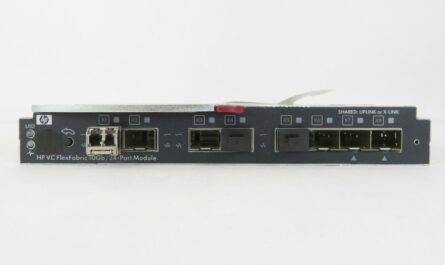With 5G networks and new wireless technologies rolling out, RF power semiconductor devices are advancing to support the demand for higher data rates, increased connectivity and new applications. As these networks become more complex and coverage needs expand, RF power semiconductors play a critical role in amplifying radio signals for transmission over long distances while consuming minimal energy. Let’s look at some of the latest innovations in RF power semiconductors that are enabling the next generation of wireless connectivity.
Gallium Nitride (GaN) Dominates the RF Power Arena
Gallium Nitride (GaN) based RF power semiconductor devices have emerged as the leading technology for power amplifier applications in wireless infrastructure including 5G networks. GaN delivers significant advantages over legacy silicon and gallium arsenide technologies including higher power densities, higher efficiencies and wider bandwidth operation. This enables a smaller form factor and lower costs for equipment manufacturers while improving coverage and network capacity.
Major chipmakers like Qorvo, Skyworks, Cree Wolfspeed and others have invested heavily in developing GaN manufacturing processes specialized for RF power applications. Key innovations include improving device robustness, reducing dielectric breakdown, optimizing packaging and increasing yield. As a result, GaN power transistors are now widely deployed in macrocell base stations, small cells and Massive MIMO arrays to deliver multi-band, multi-carrier capabilities required by 5G. GaN is also enabling satellite communications, radar systems and other defense applications that demand high output power densities.
Gallium Oxide (Ga2O3) Emerges as Next Disruptive Material
While GaN is currently the leader, Gallium Oxide (Ga2O3) is emerging as the next potential disruptive material promising even higher frequencies of operation, higher breakdown voltages and lower specific on-resistance. Its extremely wide bandgap of 4.8-4.9 eV allows it to operate at much higher voltages than GaN. This opens up new opportunities in high frequency wireless infrastructure operating above 6GHz as well as electric vehicle charging stations requiring high voltage drivers.
Several startups like Transphorm, UMS, VisIC Technologies and Priora are pursuing Ga2O3 technology. Early adopters are developing driver ICs for solar inverters, rail traction systems as well as RF front-end modules. However mass production of Ga2O3 power devices faces challenges in material quality, production yield and low cost substrates. More R&D is still required to realize its full potential and drive costs down before it can challenge GaN’s dominance in RF power markets.
New Materials Require Advanced Packaging Innovations
Developing advanced packaging technologies that can handle the high power densities and thermal issues associated with new wide bandgap materials like GaN and Ga2O3 is also critical. Next generation RF packages need to support the multi-die, multi-chip module designs required by Massive MIMO and other emerging architectures. They must provide excellent heat dissipation, high reliability and minimal parasitic inductances/capacitances.
Advanced substrate materials like aluminum nitride (AlN) possess properties well-suited for RF power module packaging. Startups like Amolytic Materials are pioneering AlN substrates optimized specifically for GaN power devices. Package designs using press-fit technologies for enhanced device cooling are also gaining traction. 3D/micro-integration techniques offer another avenue to miniaturize modules and improve thermal management. Standards are also progressing with initiatives like the CS+ and CSx power modules to streamline multi-vendor interoperability and adoption.
Continued improvements in these areas will be crucial to fully release the capabilities of new RF Power Semiconductor technologies and accelerate deployment of 5G networks and beyond. Advanced packaging becomes equally important as the choice of semiconductor material itself. Only through co-optimization of devices and packages can the true system level benefits of next-gen wireless solutions be realized.
The Road Ahead Remains Challenging but Promising
While tremendous advances have occurred, developing reliable and cost-effective RF power solutions for wireless infrastructure continues to be challenging. New materials like Ga2O3 face difficult integration challenges that will take time to overcome. Interactions between field effect transistors, control ICs, substrates and packages can introduce thermal, electrical reliability and yield issues requiring extensive characterization and debugging. Standardizing multi-vendor interoperable module designs could help address these system level complexities.
Governments and private firms worldwide recognize wireless connectivity as increasingly critical infrastructure. Billions of investment dollars are pouring into 5G rollouts and beyond. This level of support should help drive continued innovation in RF power semiconductors and position the industry for long term success in enabling the next generations of wireless networks. With coordinated efforts across materials, device and packaging domains, the future remains bright for wirelessly connecting everything everywhere with greater efficiency and affordability than ever before
*Note:
1. Source: Coherent Market Insights, Public sources, Desk research
2. We have leveraged AI tools to mine information and compile it



